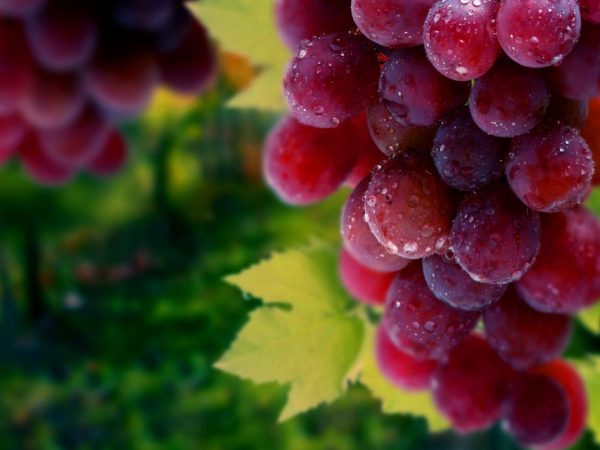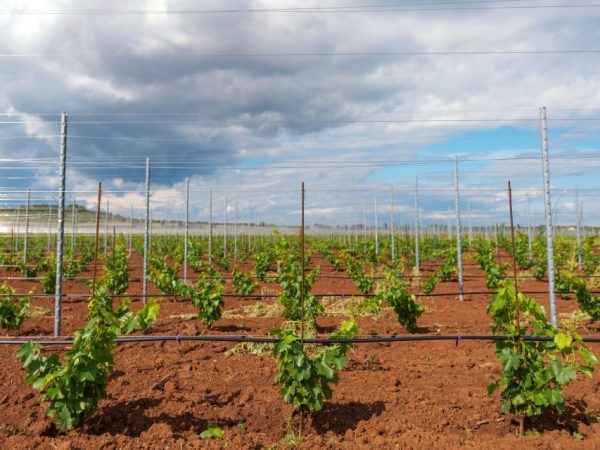Growing grapes Senator
The Senator grape is popular with gardeners. Grapes include several varieties that differ from each other.

Growing grapes Senator
Variety of Burdak
The hybrid grape Senator Burdaka belongs to the early crops. The growing season is 100 days from the moment the first buds appear until the main collection of products. The height of the bush is 3 m. The shoots are dense. On the vine, 2 years after planting, a brown crown begins to form. The inflorescences are bisexual, which has a positive effect on the ripening time and production indicators.
According to the description, Senator Burdak's sheet plate is large, up to 20 cm in length. Its surface is smooth. There are small jagged areas along the edges. The color of the leaves is dark green.
Berries are yellow, brushes up to 1.5 kg. The taste is pleasant, sweet.
Variety of Pavlovsky
The grape variety Senator Pavlovsky is characterized by early ripening. Already on day 120, the harvest is being carried out. four
According to the description, the height of the bush is 4 m. The crown is dense. Leaves are dark green. They have clear white stripes. The berries are red, weight up to 20 g.
- the average weight of a bunch is 1 kg;
- the pulp is juicy, pleasant to the taste;
Growing rules
The grapes need well-lit areas where there are no drafts. Planting is best done in fertile light soil, where the plant gives the best yield. It is better to plant planting material in spring, when there is no risk of winter frosts.
Selection of seedlings
Seedlings are bought in nurseries after inoculation. The optimum age of planting material suitable for growing in all regions of the country is 1-2 years. These seedlings quickly get used to different climatic conditions.
Landing features

Plants must be tied up
Since autumn, a landing site is being prepared. The dimensions of the holes should be 80x80 cm. The soil is fed by pouring a bucket of compost or peat into the hole. In the spring, a few days before planting, a drainage system is installed. This allows air and nutrients to circulate better within the root system. A mound is made on 2/3 of the hole, into which the roots of the seedling are introduced. The rest is sprinkled with a fertile topsoil and poured with 20 liters of warm water. Due to the intensive growth of the plant, a support is installed next to it and a garter is carried out to it. The space between rows should be 3 m, and the distance between the bushes should be 2 m.
Care advice
- Watering is carried out when there is no scorching sun. Pour 20 liters of water at room temperature under each bush. It is better to dig a circular hole around the seedling and use it to water. So the water is evenly distributed over the entire area of the root system. Before watering, all weeds are removed and the soil is loosened. This allows moisture to penetrate better into the soil.
- Top dressing is carried out during the period of intense flowering and the formation of bunches. In the spring, before budding begins, watering is carried out with a solution of potassium nitrate (20 g per 7 liters of water).This will increase the quality and quantity of the ovaries. In the summer, when the fruits begin to form, watering is carried out with a superphosphate solution (30 g per 5 liters of water). This helps the fruit to fill with a pleasant taste and be more juicy. 15 liters of solutions are poured under each plant.
- Pruning should be done as needed. When dry patches or signs of disease appear on the plants, the affected shoots should be removed. Every year, in the spring, the eyes are trimmed on the shoots. After the procedure, up to 8 of them should remain. This helps the plant to be unloaded, which increases the yield. A large number of eyes is fraught with the fact that the crops will not have enough substances for pouring, and the taste of the berries will be less pronounced.
Pest and disease control
Grapes Senator Pavlovsky are noted for good resistance to fungal infections. This grape variety is often affected by mildew, gray mold and powdery mildew.
- A solution of Bordeaux liquid (20 g per 7 liters of water) helps to fight against mildew.
- In the fight against powdery mildew, Khomus is used - an insecticide with a high coefficient of action. Dilute 30 g of this substance in 5 liters of water. Regular watering also helps prevent this disease. It is necessary that the variety does not feel sudden changes in air temperature.
- Regular treatment of the bushes with a solution of colloidal salt (20 g per 7 liters of water) helps to get rid of gray rot.
The grape variety Senator Burdaka is affected by flea beetles and aphids. These parasites are easily destroyed by the copper-containing preparation Oxykh (20 g per 10 l of water). Often exposed to fruit rot. The drug Topaz (10 g per 5 liters of water) helps to fight it.
All treatments against parasites and diseases should be carried out at intervals of 2 weeks, until the lesion is completely destroyed. The advantage of both species is that, despite the pleasant aroma, wasps do not affect this culture.
Conclusion
The grapes Senator Pavlovsky and Burdak are easy to grow for a beginner. They are unpretentious to care for and are not affected by most parasites. The main thing is to adhere to all the rules of planting and leaving. Only by following all these rules, you will enjoy tasty and healthy fruits annually, without losing yield.


